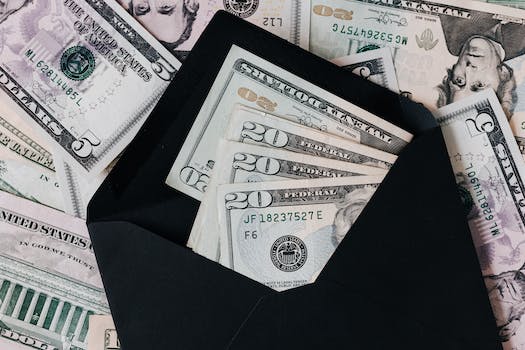How To Save Money On Gas
Introduction

Introduction: Gas prices can be a significant expense for many people, especially those who rely on their vehicles for daily transportation. However, there are several ways to save money on gas without sacrificing convenience or safety. In this article, we will discuss some practical tips for reducing your fuel costs and improving your vehicle’s fuel efficiency.
Carpooling
Gas prices can be a major expense for many people, especially those who rely on their cars for daily transportation. Fortunately, there are several ways to save money on gas, and one of the most effective is carpooling.
Carpooling is the practice of sharing a ride with one or more people who are traveling in the same direction. By sharing the cost of gas and other expenses, carpooling can help you save money while also reducing your carbon footprint and easing traffic congestion.
To get started with carpooling, you’ll need to find other people who are interested in sharing a ride. This can be done through online forums, social media groups, or simply by asking around at work or in your community.
Once you’ve found a group of people to carpool with, you’ll need to establish a schedule and route that works for everyone. This may involve some trial and error, but with a little flexibility and communication, you should be able to find a routine that works for everyone.
One of the biggest benefits of carpooling is the cost savings. By sharing the cost of gas and other expenses, you can significantly reduce your transportation costs. In addition, carpooling can also help you save money on parking fees, tolls, and other expenses associated with driving.
Another benefit of carpooling is the reduced environmental impact. By sharing a ride with others, you can reduce the number of cars on the road, which can help to reduce air pollution and greenhouse gas emissions. This can have a positive impact on the environment and help to create a more sustainable future.
In addition to the financial and environmental benefits, carpooling can also be a great way to socialize and meet new people. By sharing a ride with others, you can build relationships and connections that can last a lifetime.
Of course, there are some challenges to carpooling as well. One of the biggest is coordinating schedules and routes with other people. This can be especially difficult if you have a job or other commitments that require you to be at a certain place at a certain time.
Another challenge is finding people who are reliable and committed to the carpooling arrangement. It can be frustrating if someone is consistently late or cancels at the last minute, so it’s important to establish clear expectations and guidelines from the outset.
Despite these challenges, carpooling can be a great way to save money on gas and reduce your environmental impact. By working together with others, you can create a more sustainable and affordable transportation system that benefits everyone.
So if you’re looking for ways to save money on gas, consider carpooling as a viable option. With a little effort and communication, you can create a carpooling arrangement that works for you and your fellow travelers. And who knows, you may even make some new friends along the way!
Using public transportation
Gas prices can be a major expense for many people, especially those who rely on their cars for daily transportation. However, there are ways to save money on gas and one of the most effective ways is by using public transportation. Not only can it save you money, but it can also be a more environmentally friendly option. Here are some tips on how to save money on gas by using public transportation.
Firstly, research the public transportation options in your area. This could include buses, trains, subways, or even bike-sharing programs. Look into the schedules, routes, and fares of each option to determine which one is the most convenient and cost-effective for your needs. Many cities also offer discounted fares for students, seniors, and low-income individuals, so be sure to check if you qualify for any of these discounts.
Once you have identified the best public transportation option for you, plan your trips accordingly. This means taking into account the schedules and routes of the transportation system and planning your day around them. This may require some adjustments to your daily routine, but it can save you a significant amount of money on gas in the long run.
Another way to save money on gas is by using a carpooling service. Many cities have carpooling programs that allow you to share a ride with others who are going in the same direction as you. This not only saves you money on gas, but it also reduces traffic congestion and helps to reduce carbon emissions.
If public transportation or carpooling is not an option for you, consider biking or walking to your destination. This is not only a great way to save money on gas, but it is also a great way to get exercise and improve your overall health. Many cities have bike-sharing programs that allow you to rent a bike for a short period of time, making it easy and convenient to get around without a car.
In addition to saving money on gas, using public transportation can also be a more environmentally friendly option. Public transportation systems are often designed to be more energy-efficient than individual cars, which means they produce fewer carbon emissions. By using public transportation, you are helping to reduce your carbon footprint and contribute to a cleaner, healthier environment.
In conclusion, there are many ways to save money on gas by using public transportation. By researching the options in your area, planning your trips accordingly, and considering alternative modes of transportation such as carpooling, biking, or walking, you can significantly reduce your gas expenses. Not only is this a great way to save money, but it is also a more environmentally friendly option that can help to reduce your carbon footprint. So next time you need to get somewhere, consider using public transportation and start saving money on gas today!
Driving at a steady speed
Are you tired of spending a fortune on gas every month? With gas prices constantly fluctuating, it can be challenging to keep up with the expenses. However, there are several ways to save money on gas, and one of the most effective methods is driving at a steady speed.
Driving at a steady speed is a simple yet effective way to save money on gas. When you accelerate and brake frequently, your car uses more fuel, which can significantly increase your gas expenses. On the other hand, driving at a steady speed can help you conserve fuel and save money.
To drive at a steady speed, you need to maintain a consistent speed and avoid sudden acceleration or braking. When you accelerate too quickly, your car uses more fuel to gain speed, and when you brake suddenly, your car wastes the energy it has built up, which also uses more fuel. Therefore, it’s essential to drive smoothly and avoid sudden movements.
Another way to drive at a steady speed is to use cruise control. Cruise control is a feature that allows you to maintain a constant speed without having to press the accelerator pedal. This feature is especially useful when driving on the highway, where you can maintain a steady speed for an extended period. By using cruise control, you can save fuel and reduce your gas expenses.
In addition to driving at a steady speed, there are other ways to save money on gas. One of the most effective methods is to keep your car well-maintained. Regular maintenance, such as oil changes, tire rotations, and air filter replacements, can help your car run more efficiently, which can save you money on gas.
Another way to save money on gas is to avoid idling. When you leave your car running while parked, it uses fuel unnecessarily, which can increase your gas expenses. Therefore, it’s essential to turn off your car when you’re not driving to conserve fuel and save money.
Finally, you can save money on gas by planning your trips in advance. By combining multiple errands into one trip, you can reduce the number of times you need to drive, which can save you money on gas. Additionally, you can try to avoid rush hour traffic, which can cause you to waste fuel while idling in traffic.
In conclusion, driving at a steady speed is an effective way to save money on gas. By maintaining a consistent speed and avoiding sudden movements, you can conserve fuel and reduce your gas expenses. Additionally, you can keep your car well-maintained, avoid idling, and plan your trips in advance to save even more money on gas. With these tips, you can reduce your gas expenses and keep more money in your pocket.
Keeping tires properly inflated
Gas prices can be a major expense for many people, especially those who rely on their vehicles for daily transportation. However, there are several ways to save money on gas, and one of the most effective is by keeping your tires properly inflated.
When your tires are underinflated, it can cause your vehicle to use more gas than necessary. This is because the engine has to work harder to move the vehicle, which in turn uses more fuel. In fact, according to the U.S. Department of Energy, you can improve your gas mileage by up to 3.3% by keeping your tires inflated to the proper pressure.
So, how do you know what the proper tire pressure is for your vehicle? The information can usually be found in your owner’s manual or on a sticker located on the driver’s side door jamb. It’s important to note that the recommended pressure may be different for the front and rear tires, so be sure to check both.
Once you know the proper tire pressure, it’s important to check your tires regularly to ensure they are inflated to the correct level. This can be done with a tire pressure gauge, which can be purchased at most auto parts stores for a few dollars. Simply remove the valve cap from the tire, press the gauge onto the valve stem, and read the pressure on the gauge. If the pressure is too low, use an air compressor to add air until it reaches the recommended level.
It’s also important to check your tire pressure when the tires are cold, as heat can cause the pressure to increase and give an inaccurate reading. Ideally, you should check your tire pressure at least once a month, or more often if you notice your tires are looking low.
In addition to improving your gas mileage, keeping your tires properly inflated can also help them last longer and improve your vehicle’s handling and safety. Underinflated tires can cause uneven wear, which can lead to the need for premature replacement. They can also affect your vehicle’s ability to grip the road, especially in wet or slippery conditions.
If you’re not comfortable checking your tire pressure yourself, most auto repair shops and gas stations offer the service for free or a small fee. They can also check your tires for any signs of damage or wear, which can help prevent a blowout or other tire-related issue.
In conclusion, keeping your tires properly inflated is a simple and effective way to save money on gas and improve your vehicle’s performance and safety. By checking your tire pressure regularly and adding air as needed, you can improve your gas mileage by up to 3.3% and help your tires last longer. So, the next time you fill up your tank, take a few minutes to check your tire pressure and enjoy the savings.
Using a gas rewards credit card
Are you tired of spending a fortune on gas every month? With gas prices constantly fluctuating, it can be difficult to budget for this necessary expense. However, there is a way to save money on gas that you may not have considered: using a gas rewards credit card.
Gas rewards credit cards are a type of credit card that offer cash back or points for purchases made at gas stations. These rewards can add up quickly and help offset the cost of gas. Here are some tips for using a gas rewards credit card to save money on gas:
1. Choose the right card
Not all gas rewards credit cards are created equal. Some offer higher rewards for gas purchases, while others may have restrictions on where you can earn rewards. Before applying for a gas rewards credit card, do your research and compare different options to find the one that best fits your needs.
2. Use the card for all gas purchases
To maximize your rewards, use your gas rewards credit card for all gas purchases. This includes filling up your car, as well as any other gas-powered vehicles you may own, such as a boat or lawnmower. By using your card consistently, you can earn more rewards and save more money on gas.
3. Pay off your balance in full each month
Gas rewards credit cards often come with high interest rates, so it’s important to pay off your balance in full each month to avoid accruing interest charges. If you carry a balance, the interest charges can quickly negate any rewards you earn.
4. Look for bonus rewards
Some gas rewards credit cards offer bonus rewards for certain purchases or during certain times of the year. For example, you may earn extra rewards for purchases made at grocery stores or during the summer months. Keep an eye out for these bonus opportunities and take advantage of them to earn even more rewards.
5. Use the card for other purchases
While gas purchases are the main focus of a gas rewards credit card, many cards also offer rewards for other types of purchases. By using your card for everyday purchases like groceries and dining out, you can earn even more rewards and save even more money.
In conclusion, using a gas rewards credit card is a great way to save money on gas. By choosing the right card, using it consistently, paying off your balance in full each month, looking for bonus rewards, and using the card for other purchases, you can maximize your rewards and offset the cost of gas. So why not give it a try and see how much you can save?
Avoiding idling
Gas prices can be a significant expense for many people, especially those who rely on their vehicles for daily transportation. Fortunately, there are several ways to save money on gas, and one of the most effective methods is to avoid idling.
Idling refers to leaving your vehicle’s engine running while the car is not in motion. This can happen when you’re waiting in traffic, at a drive-thru, or even when you’re parked and waiting for someone. While idling may seem harmless, it can actually waste a significant amount of gas and money.
According to the U.S. Department of Energy, idling for just 10 seconds uses more fuel than restarting your engine. This means that if you’re idling for several minutes, you’re wasting a lot of gas and money. In fact, idling for just two minutes a day can add up to 10 gallons of wasted gas per year.
So, how can you avoid idling and save money on gas? Here are some tips:
1. Turn off your engine when you’re parked. If you’re waiting for someone or running a quick errand, turn off your engine instead of leaving it running. This can save you a significant amount of gas and money over time.
2. Plan your route to avoid traffic. If you know that you’ll be driving during rush hour, try to plan your route to avoid heavy traffic. This can help you avoid idling in traffic and wasting gas.
3. Use drive-thrus sparingly. If you’re in a hurry and need to grab some fast food or coffee, using a drive-thru can be convenient. However, if you’re stuck in a long line, you could end up idling for several minutes. Consider parking and going inside instead.
4. Combine errands into one trip. If you have several errands to run, try to combine them into one trip instead of making multiple trips. This can help you avoid unnecessary driving and idling.
5. Use a remote starter. If you live in a cold climate and need to warm up your car before driving, consider using a remote starter instead of idling. This can help you save gas and money while still warming up your car.
6. Keep your vehicle maintained. A well-maintained vehicle is more fuel-efficient, which means you’ll use less gas and save money. Make sure to keep up with regular maintenance, such as oil changes and tire rotations.
By avoiding idling, you can save a significant amount of gas and money over time. Not only is idling wasteful, but it can also contribute to air pollution and harm the environment. So, the next time you’re tempted to leave your engine running, consider turning it off instead. Your wallet (and the planet) will thank you.
Planning efficient routes
Gas prices can be a major expense for many people, especially those who rely on their vehicles for daily transportation. However, there are ways to save money on gas without sacrificing your mobility. One of the most effective ways to reduce your gas expenses is by planning efficient routes.
Planning efficient routes means taking the shortest and most direct path to your destination. This may seem like common sense, but many people don’t take the time to plan their routes and end up wasting gas by driving in circles or taking longer routes. By planning your routes ahead of time, you can save time and money on gas.
One way to plan efficient routes is by using a GPS or mapping app. These apps can help you find the shortest and most direct route to your destination, taking into account traffic, road closures, and other factors that may affect your travel time. Some apps even allow you to input your vehicle’s make and model, as well as current gas prices, to calculate the most cost-effective route.
Another way to plan efficient routes is by using a paper map. While not as convenient as a GPS or mapping app, a paper map can still be a useful tool for planning your routes. Simply mark your starting point and destination on the map, and then trace the shortest and most direct path between the two points. You can also use a highlighter or pen to mark any alternate routes or shortcuts that may save you time and gas.
When planning your routes, it’s important to consider the time of day and traffic patterns. Rush hour traffic can significantly increase your travel time and gas expenses, so try to avoid driving during peak traffic times if possible. If you must drive during rush hour, consider taking alternate routes or using public transportation to avoid sitting in traffic.
Another factor to consider when planning your routes is the terrain. Driving uphill or on rough terrain can increase your gas consumption, so try to avoid these types of routes if possible. If you must drive on hilly or rough terrain, consider using a lower gear or reducing your speed to conserve gas.
In addition to planning efficient routes, there are other ways to save money on gas. One of the most effective ways is by maintaining your vehicle. Regular oil changes, tire rotations, and tune-ups can improve your vehicle’s fuel efficiency and reduce your gas expenses. You can also save money on gas by driving at a steady speed, avoiding sudden stops and starts, and removing any unnecessary weight from your vehicle.
In conclusion, planning efficient routes is a simple and effective way to save money on gas. By taking the shortest and most direct path to your destination, you can reduce your travel time and gas expenses. Whether you use a GPS, mapping app, or paper map, taking the time to plan your routes can help you save money and reduce your carbon footprint. So the next time you hit the road, remember to plan ahead and drive smart!
Conclusion
Conclusion: To save money on gas, you can try driving at a steady speed, avoiding idling, keeping your tires properly inflated, using cruise control, and planning your trips efficiently. Additionally, you can consider carpooling, using public transportation, or switching to a more fuel-efficient vehicle. By implementing these tips, you can reduce your gas expenses and save money in the long run.







